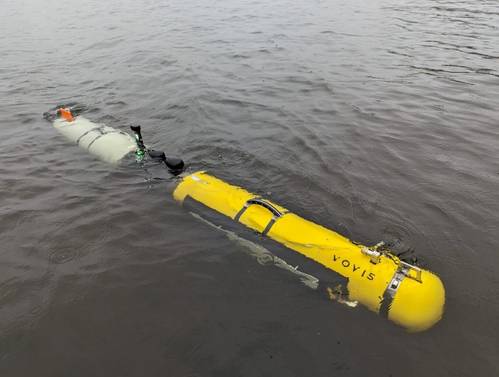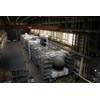Tech Partners Enhance NATO Navy’s AUV Capabilities
A collaboration between tech partners L3Harris, Voyis and Wavefront is enhancing NATO Navy’s autonomous underwater vehicles (AUV) capabilities.
L3Harris’ area of expertise is the development of AUVs for a variety of maritime applications. To further improve L3Harris’ Iver4 900 AUV capabilities, the global defense company integrated a Voyis Recon LS and the Wavefront Solstice 3000 multiple-aperture sonar (MAS) Combined AUV payload onto the Iver4 900 platform to support defense missions.
The Voyis team, in collaboration with Wavefront Systems, announced a successful factory acceptance test of the Recon LS/3000MAS AUV payload with L3Harris, to be delivered to a NATO Navy, further improving the IVER4 900 capabilities. It consists of a single, integrated forward payload section housing Voyis’ compact dynamic laser scanner, which captures high-resolution 3D point-cloud data, the Voyis’ 4K imaging system with appropriate lighting which captures crisp, evenly illuminated still images with its edge-computed image enhancement feature, and finally, the Wavefront Systems’ Solstice multi-aperture side-scan sonar that delivers 200m-wide swath coverage and bathymetry at high resolution.
The Voyis Recon LS/WaveFront Solstice Combined AUV payload offers a solution for autonomous underwater vehicles to covertly detect, classify, and identify mine-like objects (MLOs), reducing risk to divers. The system uses the multi-aperture side-scan sonar, 4K digital still-camera and high-resolution laser scanner to carry out this task.
The L3Harris’ Iver4 900 vehicle provides the payload with both stability and endurance to make the most of the payload.
MCM operations involve four stages: detection, classification, identification and disposal/neutralization. Currently, side-scan sonar is used for mine detection and sometimes for classification. However, visual identification requires a clearance diver or remotely operated vehicles to enter the minefield, which is time-consuming and risky, especially in areas with complex seabed. This requires multiple resources to be deployed into a potentially hazardous environment to complete a successful operation, which is inefficient when relying on lower-quality sensor data and dangerous if humans are mobilizing the assets.
The Recon LS/WaveFront Solstice MAS Combined AUV payload is designed to rethink how mine countermeasure (MCM) operations are conducted today and enable single assets to complete complex missions without deploying additional resources within the minefield. By enabling search and classify mapping using Wavefront’s leading multi-aperture sonar Solstice, the vessel can re-acquire and identify MLOs using Voyis’ laser and camera, improving the probability of detection, reducing false alarms, and sustaining a high op tempo.
Voyis and Wavefront partnered with Forcys, a global maritime defense company and a sister company in Covelya Group, to market the system to allied nations.














 December 2025
December 2025



